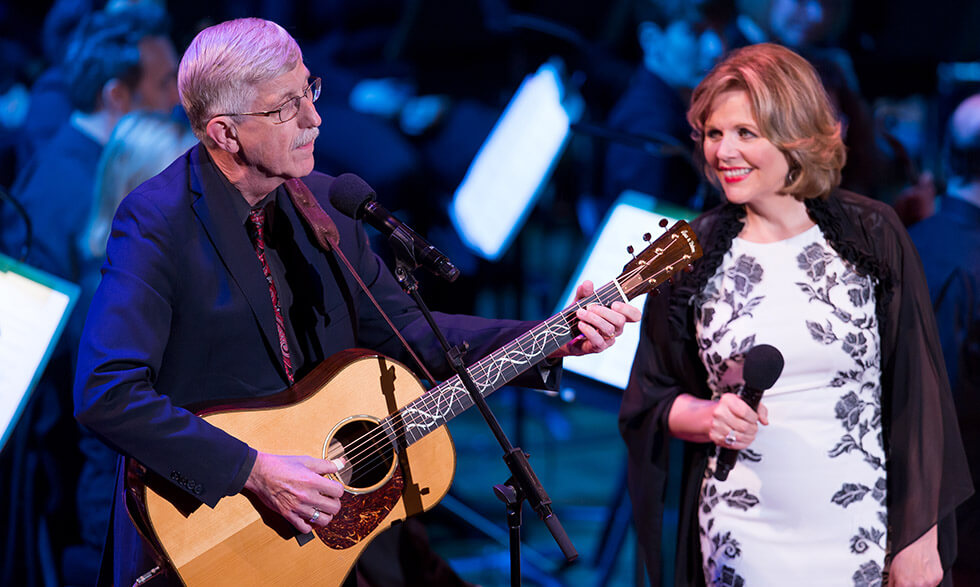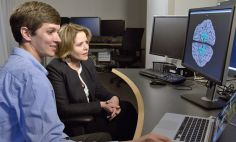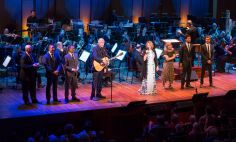Can music help us learn? Can it ease chronic pain? Can it improve your health in general?
These are important questions being studied by the National Institutes of Health (NIH) and the John F. Kennedy Center for the Performing Arts, in collaboration with the National Endowment for the Arts.
The joint initiative, Sound Health, is exploring the intersection between music, the brain, and wellness. It brings together leading researchers, music therapists, and artists to better understand the impact of art on the mind and body.
Just this fall, NIH announced that it would be supporting up to 5 million dollars for research exploring music’s impact on our health.
How sound affects the brain
“One of the aspects that makes this field so exciting is the potential broad impact, from basic science to enhanced therapies, and across the lifespan from newborns to aging populations,” says Thomas Cheever, Ph.D.
Dr. Cheever is staff assistant to Dr. Collins for the Sound Health initiative and director of the Muscle Disorders and Therapies Program at the National Institute of Arthritis and Musculoskeletal and Skin Diseases.
“For example, there are stroke survivors who know what they want to say but can’t speak it. That is called Broca’s Aphasia,” Dr. Cheever says. “The part of the brain that allows ordinary speech is damaged. In one example, a patient who wants to say, ‘I am thirsty,’ can’t say it, but, when it’s attached to a melody, can sing it, and this can translate into improved speech during recovery.”
Broca’s Aphasia and related topics were included in a June 2017 article about the initiative in the Journal of the American Medical Association. The article was written by NIH Director Francis Collins, M.D., Ph.D., and world-renowned soprano Renée Fleming.
Dr. Collins has also established a trans-NIH working group to further support and develop this research area. The response, notes Dr. Cheever, has been remarkably widespread across NIH institutes, centers, and offices.
“We’ve studied, at some levels, how music and the brain interact, but we really haven’t had the tools to look at it as precisely as we can now,” Dr. Collins says.
Using things like music therapy and imaging technology, scientists (including some supported by NIH) are starting to understand how sound impacts health and well-being.
“Using new imaging technologies, scientists have documented how early musical training produces actual anatomic changes in the brain,” says Dr. Collins.
“A growing number of reports are appearing where music therapy has provided benefit to individuals with medical conditions as diverse as autism, chronic pain, and stroke,” he explains. “But there is so much we still don’t know about the effects of music in health broadly, and this partnership will help us to explore this uncharted territory.”
‘Music and the Mind’
Music and health research has extended beyond the lab and onto the stage.
On Sept. 6 and 7, 2018, NIH hosted the second annual “Sound Health: Music and the Mind” event, a series of performances, lectures, and hands-on workshops at the Kennedy Center in Washington, D.C.
The event brought leading researchers in the field and performers to explore the intersection of music and science.
“We can both care about the arts, and we can care about science. And we can look at a place where they intersect as an exciting opportunity to observe what being human is all about,” Dr. Collins says.
The event looked at many types of sound and health interactions, including:
- Science of rhythm: Neuroscientists Nina Kraus, Ph.D., and Adam Gazzaley, M.D., Ph.D., were joined by legendary drummer of the Grateful Dead, Mickey Hart, to illustrate the art and science of rhythm.
- Early music education: Renée Fleming moderated a panel of prominent researchers and educators to discuss how early music training can shape the brain in powerful and lasting ways.
- Child development: In this discussion-demonstration, Cognitive psychologist Laurel Trainor, Ph.D., showed how music and rhythms affect learning and revealed the importance of rhythmic movements for social development. She was joined by clinicians who use music and movement with at-risk infants and children with developmental disorders.
- Sound and creativity: Neuroscientist Charles Limb, M.D., and special guest performers demonstrated how encouraging and developing musical improvisational skills in children has led to a better understanding of how creativity develops in the human brain.
All performances are available to watch online.







